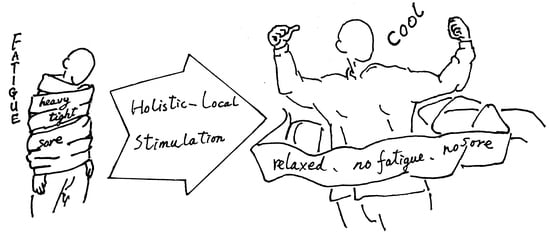Long-Term Effect of Vibration Therapy for Training-Induced Muscle Fatigue in Elite Athletes
Abstract
:1. Introduction
2. Materials and Methods
2.1. Study Design
2.2. Study Subjects
2.3. The Intervention Group
2.4. Intervention Steps
2.5. Measurements
2.6. Statistical Analysis
3. Results
4. Discussion
5. Conclusions
Author Contributions
Funding
Institutional Review Board Statement
Informed Consent Statement
Data Availability Statement
Acknowledgments
Conflicts of Interest
References
- Zhou, Z.; Zhong, Y. Research on the assessment and treatment of injury risk for elite track and field athletes. China Sport Sci. Technol. 2010, 46, 3–7. [Google Scholar] [CrossRef]
- Tan, Z.; Lou, J.; Li, N. Investigation and analysis of sports injuries and diseases among competitive swimmers. Sport Sci. Re-Search 2019, 40, 93–97. [Google Scholar] [CrossRef]
- Sanders, G.; Stevinson, C. Associations between retirement reasons, chronic pain, athletic identity, and depressive symptoms among former professional footballers. Eur. J. Sport Sci. 2017, 17, 1311–1318. [Google Scholar] [CrossRef] [Green Version]
- Zhao, W.; He, Y.; Su, J.; Wang, Y. Study of the eliminating effect of warm needling and physiotherapy on sports fatigue in high-level long-distance runners. Shanghai J. Acupunct. Moxibustion 2012, 31, 874–876. [Google Scholar] [CrossRef]
- Liang, F.; Luo, D.; Hou, Y.; Zhang, J. Effect of acupuncture on the recovery of fatigue after strenuous exercise. J. Beijing Univ. Phys. Educ. 2003, 26, 192–194. [Google Scholar] [CrossRef]
- Junior, E.C.L.; de Godoi, V.; Mancalossi, J.L.; Rossi, R.P.; De Marchi, T.; Parente, M.; Grosselli, D.; Generosi, R.A.; Basso, M.; Frigo, L.; et al. Comparison between cold water immersion therapy (CWIT) and light emitting diode therapy (LEDT) in short-term skeletal muscle recovery after high-intensity exercise in athletes—preliminary results. Lasers Med Sci. 2010, 26, 493–501. [Google Scholar] [CrossRef] [Green Version]
- Carballeira, E.; Morales, J.; Fukuda, D.H.; Granada, M.L.; Carratalá-Deval, V.; De Durana, A.L.D.; Stout, J.R. Intermittent Cooling During Judo Training in a Warm/Humid Environment Reduces Autonomic and Hormonal Impact. J. Strength Cond. Res. 2019, 33, 2241–2250. [Google Scholar] [CrossRef]
- Pinto, H.D.; Vanin, A.A.; Miranda, E.; Tomazoni, S.S.; Johnson, D.S.; Albuquerque-Pontes, G.M.; Aleixo, I.D.O.; Grandinetti, V.D.S.; Casalechi, H.L.; Carvalho, P.D.T.D.; et al. Photobiomodulation Therapy Improves Performance and Accelerates Recovery of High-Level Rugby Players in Field Test: A Randomized, Crossover, Double-Blind, Placebo-Controlled Clinical Study. J. Strength Cond. Res. 2016, 30, 3329–3338. [Google Scholar] [CrossRef]
- Tomazoni, S.S.; Machado, C.D.S.M.; De Marchi, T.; Casalechi, H.L.; Bjordal, J.M.; Carvalho, P.D.T.C.D.; Leal-Junior, E.C.P. Infrared Low-Level Laser Therapy (Photobiomodulation Therapy) before Intense Progressive Running Test of High-Level Soccer Players: Effects on Functional, Muscle Damage, Inflammatory, and Oxidative Stress Markers—A Randomized Controlled Trial. Oxid. Med. Cell. Longev. 2019, 2019, 1–12. [Google Scholar] [CrossRef]
- Roberts, L.A.; Caia, J.; James, L.P.; Scott, T.J.; Kelly, V. Effects of External Counterpulsation on Postexercise Recovery in Elite Rugby League Players. Int. J. Sports Physiol. Perform. 2019, 14, 1350–1356. [Google Scholar] [CrossRef]
- Schimpchen, J.; Wagner, M.; Ferrauti, A.; Kellmann, M.; Pfeiffer, M.; Meyer, T. Can Cold Water Immersion Enhance Recovery in Elite Olympic Weightlifters? An Individualized Perspective. J. Strength Cond. Res. 2017, 31, 1569–1576. [Google Scholar] [CrossRef] [Green Version]
- Chu, Y.; Zhao, Y.; Hu, S.; Wang, Q.; Semeah, L.M.; Jia, H.; Lv, T.; Li, X.; Wang, R. Immediate Effect of Local Vibration Therapy for Sport-induced Fatigue Based on Traditional Chinese Medicine’s Holistic Theory. J. Multidiscip. Health 2020, 13, 1993–2001. [Google Scholar] [CrossRef]
- Skorski, S.; Mujika, I.; Bosquet, L.; Meeusen, R.; Coutts, A.J.; Meyer, T. The Temporal Relationship between Exercise, Recovery Processes, and Changes in Performance. Int. J. Sports Physiol. Perform. 2019, 14, 1015–1021. [Google Scholar] [CrossRef]
- Cifrek, M.; Medved, V.; Tonković, S.; Ostojic, S. Surface EMG based muscle fatigue evaluation in biomechanics. Clin. Biomech. 2009, 24, 327–340. [Google Scholar] [CrossRef]
- Hägg, G.M.; Luttmann, A.; Jäger, M. Methodologies for evaluating electromyographic field data in ergonomics. J. Electromyogr. Kinesiol. 2000, 10, 301–312. [Google Scholar] [CrossRef]
- Petrofsky, J.S. Computer analysis of the surface EMG during isometric exercise. Comput. Biol. Med. 1980, 10, 83–95. [Google Scholar] [CrossRef]
- Crenshaw, A.; Karlsson, S.; Gerdle, B.; Fridén, J. Differential responses in intramuscular pressure and EMG fatigue indicators during low- vs. high-level isometric contractions to fatigue. Acta Physiol. Scand. 1997, 160, 353–361. [Google Scholar] [CrossRef]
- Valenti, M.; Scelles, N.; Morrow, S. Elite sport policies and international sporting success: A panel data analysis of European women’s national football team performance. Eur. Sport Manag. Quart. 2019, 20, 300–320. [Google Scholar] [CrossRef]
- Fukugawa, N. Impacts of social capital on performance of professional athletes: Evidence from motorboat racing in Japan. Int. J. Sport Manag. Mark. 2018, 18, 220–240. [Google Scholar]
- Gu, M.; Liu, W.; Tao, X. On sEMG research of vibration training to relieve sports muscular fatigue. J. Nat. Sci. Hunan Norm. Univ. 2015, 38, 29–33. [Google Scholar] [CrossRef]
- Zhang, F. Experimental comparative study on effects of different recovery methods after muscle fatigue. J. Wuhan Inst. Phys. Educ. 2017, 51, 88–95. [Google Scholar] [CrossRef]
- Zhang, L.; Qin, Y.-M.; Zheng, L.-X.; Zhang, M.; Guo, H.-J.; Xu, L.-R.; Qiang, L.; Wang, D.-N.; Chen, X.-M. Governor vessel moxibustion: Ancient Chinese medical technology with new vitality. Chin. J. Integr. Med. 2015, 23, 396–400. [Google Scholar] [CrossRef] [PubMed]
- Yu, S.; Yang, J.; Yang, M.; Gao, Y.; Chen, J.; Ren, Y.; Zhang, L.; Chen, L.; Liang, F.; Hu, Y. Application of Acupoints and Meridians for the Treatment of Primary Dysmenorrhea: A Data Mining-Based Literature Study. Evid. Based Complement. Altern. Med. 2015, 2015, e752194. [Google Scholar] [CrossRef] [Green Version]
- Xing, L.; Qu, L.; Chen, H.; Gao, S. Clinical effect of traditional Chinese spinal orthopedic manipulation in treatment of Functional Abdominal Pain Syndrome. Complement. Ther. Med. 2017, 32, 19–24. [Google Scholar] [CrossRef]
- Wei, Y.; Yan, X.; Cao, Z.; Li, X. Point-selection rules analysis in acupuncture-moxibustion treatment of asthma based on the eval-uation of pulmonary function. Shanghai J. Acupunct. Moxibustion 2017, 36, 1376–1380. [Google Scholar]
- Jiang, T.; Jiang, Z.; Zhou, J.; Sun, Z. Traditional Chinese Medicine Composition for Preventing and Treating Externally Diabetes and a Method of Using the Same. Patent U.S. 2018/0055898A1, 1 March 2018. [Google Scholar]
- Pan, B.; Chen, T.; Lei, L. Progress of research on massage therapy for sub-health conditions. TMR Non-Drug Ther. 2019, 2, 20–26. [Google Scholar]
- Ngai, S.P.C.; Jones, A.Y.M.; Cheng, E.K.W. Lung meridian acupuncture point skin impedance in asthma and description of a mathematical relationship with FEV1. Respir. Physiol. Neurobiol. 2011, 179, 187–191. [Google Scholar] [CrossRef]
- Pan, J.; Zhang, W.; Yan, J.; Chang, X.-R.; Zhang, H.; Chen, W.-S.; Shi, W.-Y.; Pan, C. Effects of electroacupuncture of acupoints of pericardium meridian on serum VEGF content and cerebral VEGF expression in cerebral ischemia rats. Zhen Ci Yan Jiu Acupunct. Res. 2012, 37, 197–201. [Google Scholar]
- Chang, S.; Chao, W.-L.; Chiang, M.-J.; Li, S.-J.; Lu, Y.-T.; Ma, C.-M.; Cheng, H.-Y.; Hsieh, S.-H. Effects of acupuncture at Neiguan (PC 6) of the pericardial meridian on blood pressure and heart rate variability. Chin. J. Physiol. 2008, 51, 167–177. [Google Scholar]
- Horowitz, S. Acupuncture for Treating Mental Health Disorders. Altern. Complement. Ther. 2009, 15, 135–141. [Google Scholar] [CrossRef]
- Li, Y.; Yang, H.; Zhang, L.; Zheng, D. Clinical study on acupuncture-moxibustion treatment for insomnia in heart-spleen deficiency. J. Acupunct. Tuina Sci. 2010, 8, 23–25. [Google Scholar] [CrossRef]
- Si, F.C. Basis of Theory of Traditional Chinese Medicine; People’s Military Surgeon Publishing House: Beijing, China, 2005. (In Chinese) [Google Scholar]
- Myers, T.W. Anatomy Trains: Myofascial Meridians for Manual and Movement Therapists, 3rd ed.; Churchill Livingstone: London, UK; Elsevie: Amsterdam, The Netherlands, 2014. [Google Scholar]
- Luigi, S.; Carla, S. Fascial Manipulation for Internal Dysfunction; Piccin: Padova, Italy, 2013. [Google Scholar]
- Issurin, V.B. Vibrations and their applications in sport. A Review. J. Sports Med. Phys. Fit. 2005, 45, 324–336. [Google Scholar]
- Gojanovic, B.; Feihl, F.; Liaudet, L.; Gremion, G.; Waeber, B. Whole-body vibration training elevates creatine kinase levels in sedentary subjects. Swiss Med Wkly. 2011, 141, w13222. [Google Scholar] [CrossRef] [PubMed]
- Lohman, E.B., III; Petrofsky, J.S.; Maloney-Hinds, C.; Betts-Schwab, H.; Thorpe, D. The effect of whole body vibration on lower extremity skin blood flow in normal subjects. Med. Sci. Monit. 2007, 13, CR71-6. [Google Scholar] [PubMed]
- Broadbent, S.; Rousseau, J.J.; Thorp, R.M.; Choate, S.L.; Jackson, F.S.; Rowlands, D.S. Vibration therapy reduces plasma IL6 and muscle soreness after downhill running. Br. J. Sports Med. 2008, 44, 888–894. [Google Scholar] [CrossRef]
- Li, J. Crowding-Out Effect of Exports on Domestic Consumption: An Analysis Based on Panel Data of Several Industries in China. Mod. Econ. 2017, 8, 172–180. [Google Scholar] [CrossRef] [Green Version]
- Kupolusi, J.A.; Adeleke, R.A.; Akinyemi, O.; Oguntuase, B. Comparative analysis of least square regression and fixed effect panel data re-gression using road traffic accident in Nigeria. Int. J. Sci. Technol. Res. 2015, 4, 42–52. [Google Scholar]
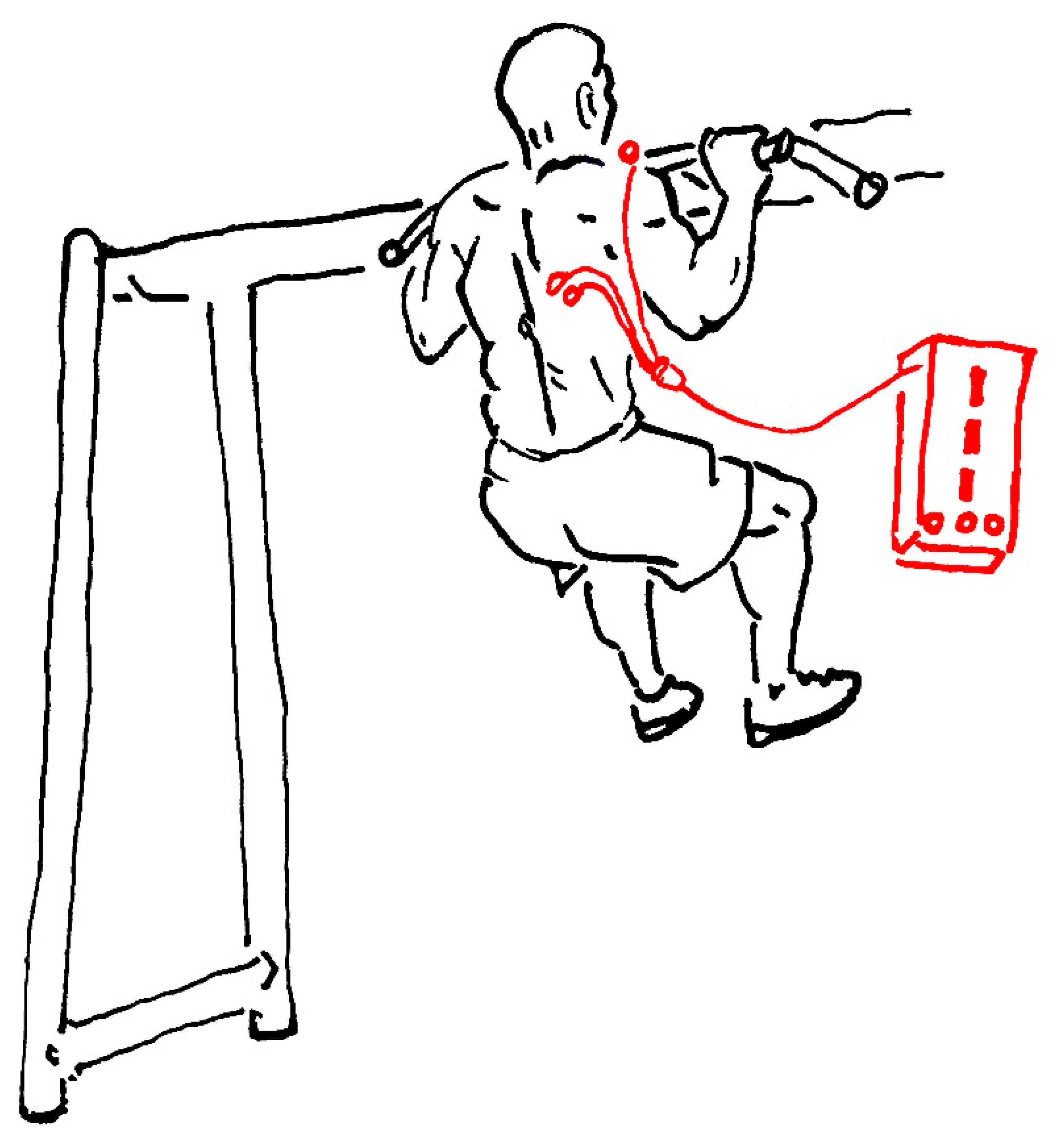
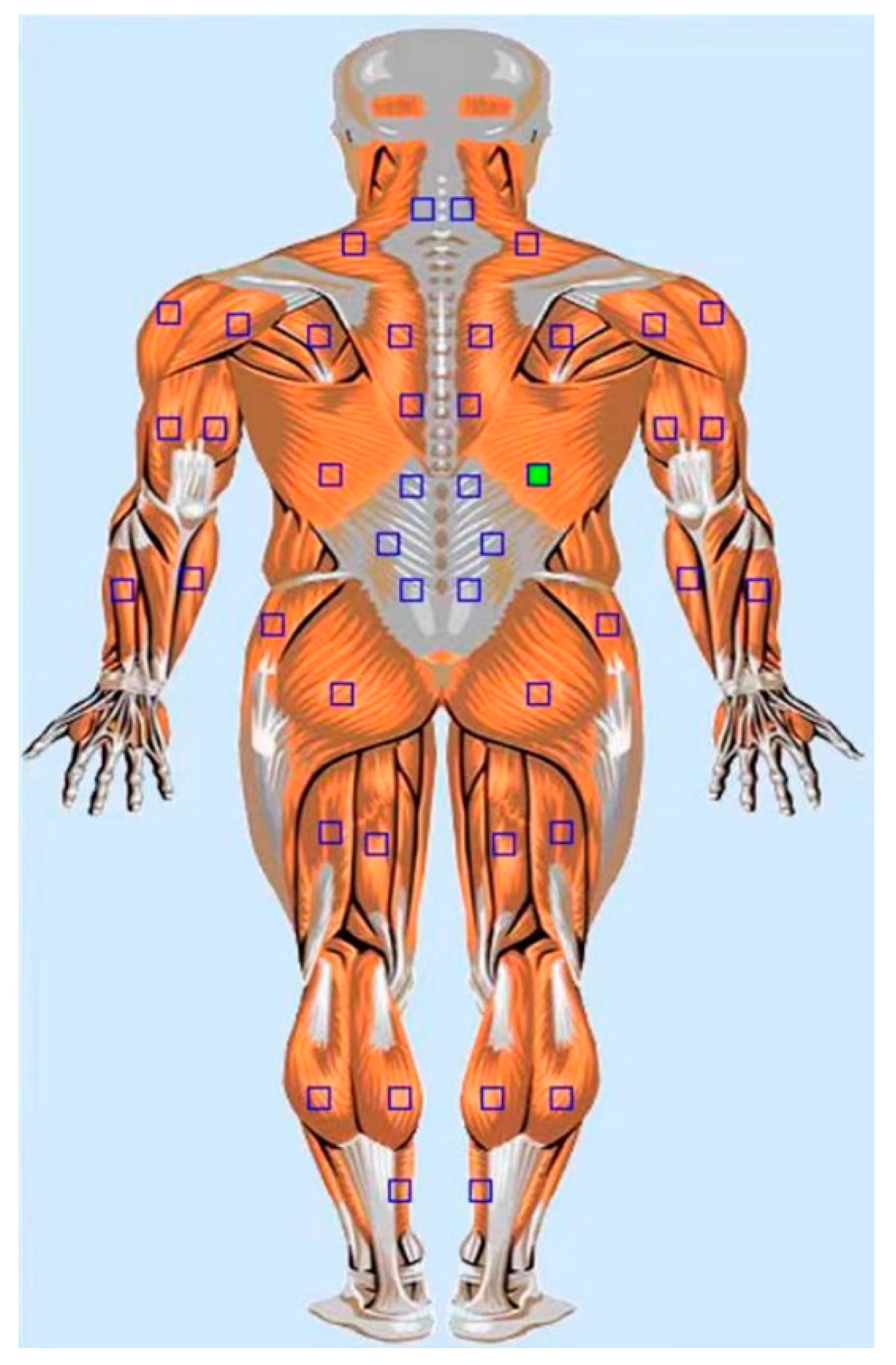
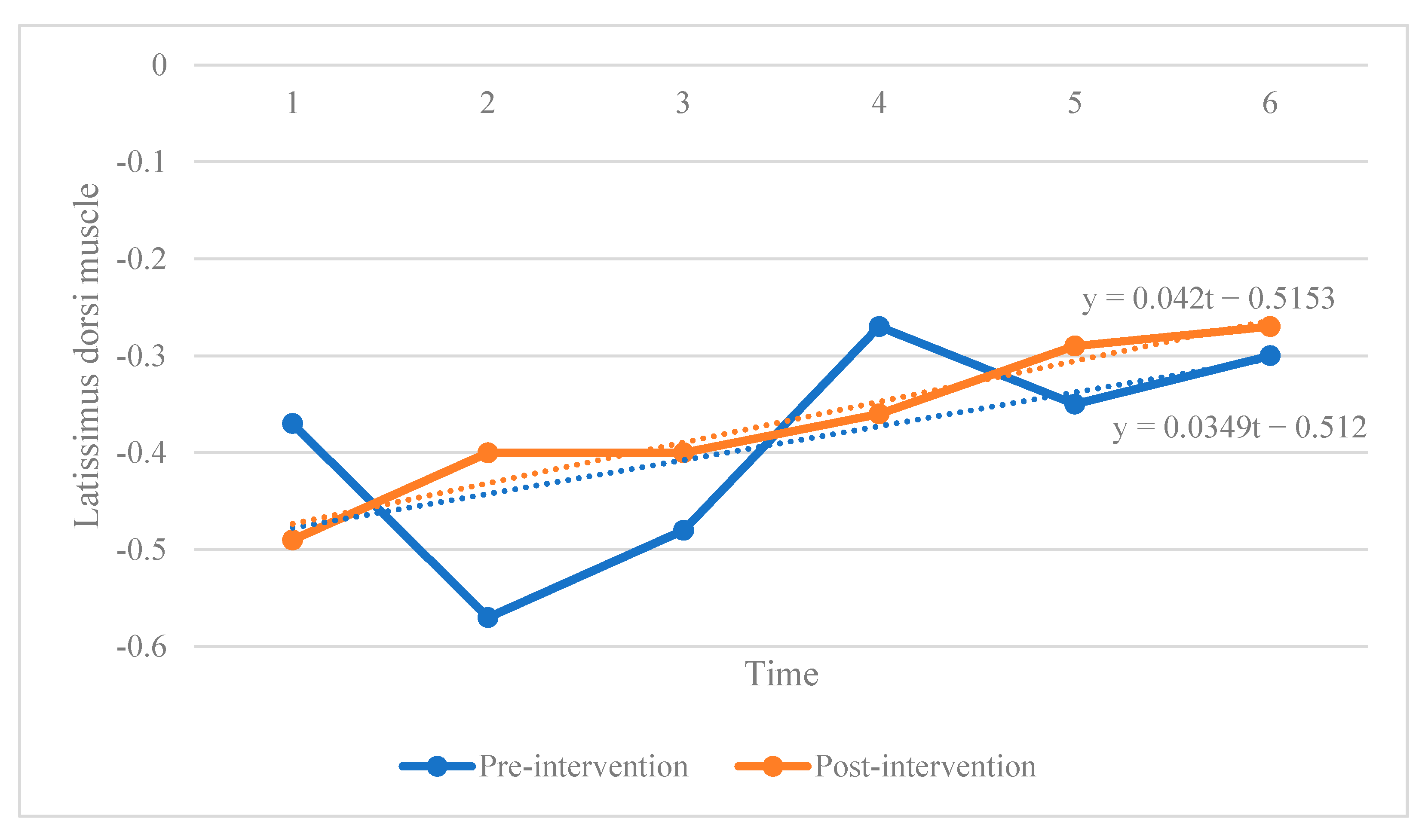
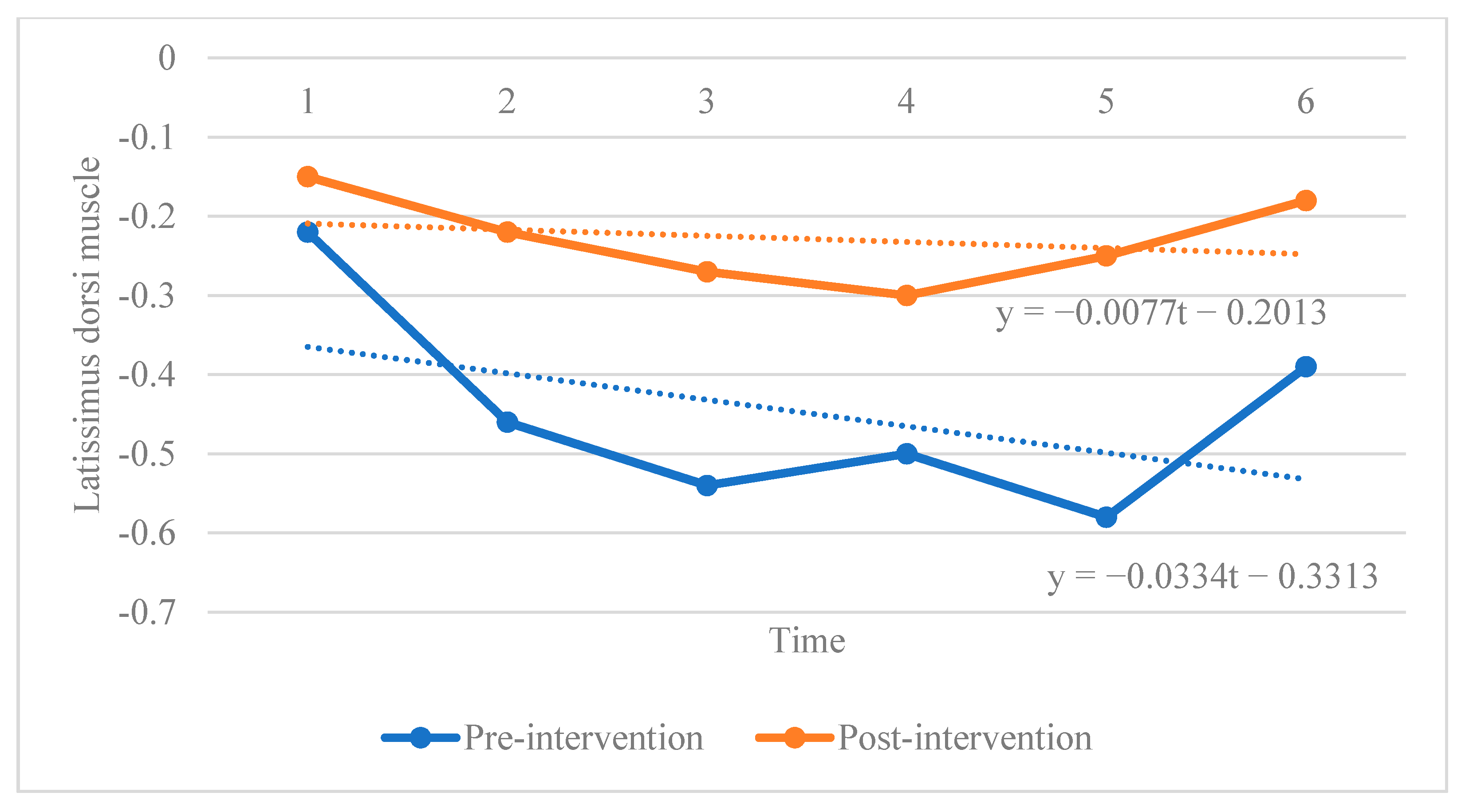
| Characteristic | Statistical Methodology | |
|---|---|---|
| 1 | The intervention and control group are composed of time series of repetitive measurements of the same athlete at different times. | Self-contrasted method |
| 2 | The sample size is small due to the limited number of elite athletes, meanwhile, some of the participants dropped out of the trial due to injury or national team recruitment (no more than two athletes were absent at one test). | Panel data model [8,9] |
| Molecular DOF | Denominator DOF | F | p-Value | |
|---|---|---|---|---|
| Control Group | ||||
| β0 | 1 | 19.01 | 109.10 | 0.00 |
| β1 | 5 | 56.70 | 1.61 | 0.17 |
| β2 | 1 | 32.19 | 1.77 | 0.19 |
| Intervention Group | ||||
| β0 | 1 | 11.46 | 121.21 | 0.00 |
| β1 | 5 | 48.62 | 0.70 | 0.62 |
| β2 | 1 | 23.60 | 7.42 | 0.01 |
Publisher’s Note: MDPI stays neutral with regard to jurisdictional claims in published maps and institutional affiliations. |
© 2022 by the authors. Licensee MDPI, Basel, Switzerland. This article is an open access article distributed under the terms and conditions of the Creative Commons Attribution (CC BY) license (https://creativecommons.org/licenses/by/4.0/).
Share and Cite
Chu, Y.; Wang, Q.; Chu, M.; Geng, B.; Jia, H.; Li, X.; Lv, T.; Jiang, S. Long-Term Effect of Vibration Therapy for Training-Induced Muscle Fatigue in Elite Athletes. Int. J. Environ. Res. Public Health 2022, 19, 7531. https://doi.org/10.3390/ijerph19127531
Chu Y, Wang Q, Chu M, Geng B, Jia H, Li X, Lv T, Jiang S. Long-Term Effect of Vibration Therapy for Training-Induced Muscle Fatigue in Elite Athletes. International Journal of Environmental Research and Public Health. 2022; 19(12):7531. https://doi.org/10.3390/ijerph19127531
Chicago/Turabian StyleChu, Yufan, Qiming Wang, Muyan Chu, Baofeng Geng, Huanguang Jia, Xiaolong Li, Tao Lv, and Suyi Jiang. 2022. "Long-Term Effect of Vibration Therapy for Training-Induced Muscle Fatigue in Elite Athletes" International Journal of Environmental Research and Public Health 19, no. 12: 7531. https://doi.org/10.3390/ijerph19127531
APA StyleChu, Y., Wang, Q., Chu, M., Geng, B., Jia, H., Li, X., Lv, T., & Jiang, S. (2022). Long-Term Effect of Vibration Therapy for Training-Induced Muscle Fatigue in Elite Athletes. International Journal of Environmental Research and Public Health, 19(12), 7531. https://doi.org/10.3390/ijerph19127531





